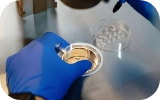Key Analysis for Studying Male Infertility: Tests and Diagnostics

When a couple finds it difficult to conceive, both partners should be tested for infertility. In many cases, there may be more than one cause of infertility. Semen analysis is an important part of diagnosing male infertility.
What is Semen Analysis?
Semen analysis involves taking a semen sample and testing it in a lab for sperm concentration, sperm quality and infections. A semen analysis for studying infertility may need to be repeated several times over a period of time to get an accurate result. This is because the volume and quality of sperm being produced may vary from one day to the next.
The sample needed for this test may be collected in a doctor's office with the help of electrical stimulation or by masturbating into a special container. In certain cases, a sample may be obtained by having sexual intercourse with a special condom. In such cases, the sample must be sent to the doctor within 60 minutes of ejaculation and be kept at body temperature.
Understanding the Results of a Semen Analysis
There are many aspects to the results of a semen analysis including:
The Shape of the Sperm
Ideally, at least 4% of the sperm in the sample should be normally shaped. This means that it must have an oval head, midsection that is thinner than the head and a long tail that is thinner than the midsection.
Movement
At least 40% of the sperm in the sample should be able to move properly for an hour after ejaculation. This movement is usually rated on a scale of 0 to 4 where a score of 0 means that the sperm is not moving. If the sperm cannot move, it will not be able to swim through the cervical mucus and reach the egg.
pH Levels
This should be between 7.2 and 7.8 to be considered normal. Higher than normal results usually indicates an infection. Lower than normal results could be a sign of blocked ejaculation ducts.
Liquefaction
When ejaculated, semen is usually thick but within 15-30 minutes, it should turn into a watery consistency. This helps the sperm move.
Sperm Count
A man should ideally have at least 15 million sperm per millilitre of semen. Less than this is considered a sign of low sperm density and could affect fertility.
Appearance
Semen should be whitish grey in colour. A reddish brown tint could indicate the presence of blood. Similarly, a yellowish tint could be a sign of jaundice or be the side effect of certain medications.
 Infertility Counselling
Infertility Counselling Female Infertility Treatment
Female Infertility Treatment Andrology Treatment
Andrology Treatment Fertility Enhancing Surgeries - Female
Fertility Enhancing Surgeries - Female Fertility Enhancing Surgeries - Male
Fertility Enhancing Surgeries - Male Endoscopy Treatment
Endoscopy Treatment IUI Treatment
IUI Treatment IVF Treatment
IVF Treatment ICSI Treatment
ICSI Treatment Advanced IVF Solutions
Advanced IVF Solutions Embryology
Embryology Vitrification Egg, Embryo, Sperm Freezing
Vitrification Egg, Embryo, Sperm Freezing Preimplantation Genetic Testing (PGT)
Preimplantation Genetic Testing (PGT) Donation Program Embryo / Egg / Sperm
Donation Program Embryo / Egg / Sperm Self-cycleTM IVF
Self-cycleTM IVF

 Self-cycleTM IVF
Self-cycleTM IVF










